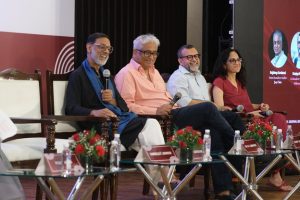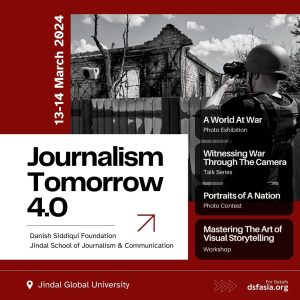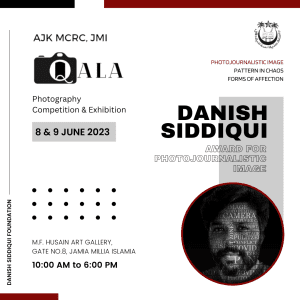Photojournalists are an essential component of the media landscape. They are responsible for capturing images that inform, educate, and inspire the public about events occurring around the world. However, photojournalism is a risky profession, particularly in situations of conflict. Photojournalists covering conflicts face many dangers, including physical harm, psychological trauma, and the risk of being killed. Sadly, many photojournalists have lost their lives while documenting conflict, and their sacrifices deserve to be remembered.
The reasons for photojournalists’ deaths are varied. In some cases, they are caught in the crossfire between opposing forces. In others, they are deliberately targeted by one side or another, as combatants see them as a threat or a propaganda tool. Some photojournalists are abducted or taken hostage for ransom, while others are targeted by terrorist groups seeking to make a political statement. In many cases, the perpetrators of these crimes go unpunished, leaving families and colleagues with a sense of frustration and anger.
One of the most high-profile cases of a photojournalist being killed while covering a conflict was that of Marie Colvin, a veteran correspondent for the Sunday Times. Colvin was killed in February 2012 while covering the conflict in Syria. She was in the city of Homs, which was under siege by government forces, when she and French photojournalist Remi Ochlik were targeted by artillery fire. Colvin was killed instantly, while Ochlik died shortly afterward. Their deaths were a stark reminder of the dangers facing journalists in conflict zones.
Another case that gained international attention was the killing of Pulitzer Prize-winning photographer Anja Niedringhaus in Afghanistan in 2014. Niedringhaus was covering the presidential elections when she was shot and killed by an Afghan police officer. The motive for the killing remains unclear, but it was a devastating blow to the photojournalism community.
Similarly, Danish Siddiqui’s murder made headlines and was widely covered across the globe. A photojournalist for Reuters Danish covered conflict zones around the world. He was known for his powerful and intimate images that provided a unique perspective on the events he covered. Unfortunately, like many photojournalists before him, he lost his life while documenting the ongoing conflict in Afghanistan. In 2021, Siddiqui was embedded with Afghan Special Forces in Kandahar, covering the conflict between government forces and the Taliban. On July 16th, while on assignment, he was killed in an attack by Taliban fighters after being captured. His death was a tragic reminder of photojournalists’ risks while covering conflicts.
These are just a few examples of the many photojournalists who have lost their lives while covering conflicts. In 2022, the Committee to Protect Journalists (CPJ) documented the deaths of 67 journalists who were killed while working, many of whom were photojournalists. The CPJ also reported that at least 50% of journalists killed in the line of duty are targeted for their work.
The deaths of photojournalists significantly impact the media industry as a whole. Their work is crucial to our understanding of events in conflict zones, and their deaths often leave a void in coverage that is difficult to fill. Additionally, the psychological toll of losing colleagues in such a brutal manner can impact journalists’ mental health.
Despite the risks involved, many photojournalists work in conflict zones because they believe their work can make a difference. By capturing images of the devastation and suffering caused by war, they hope to raise awareness and inspire action. Photojournalism can be a powerful tool for promoting peace and justice, but it can also be dangerous.
To mitigate the risks faced by photojournalists, there have been several efforts to promote safety and provide training. Organizations like the International News Safety Institute (INSI) and the Rory Peck Trust provide resources and support for freelance journalists working in dangerous environments. Some news organizations also have in-house safety protocols and procedures to protect their journalists. However, these measures could be more foolproof, and photojournalists continue to face significant risks.
One of the challenges in protecting photojournalists is the lack of accountability for crimes committed against journalists. In many cases, those responsible for attacks on journalists go unpunished, creating a culture of impunity that only encourages more violence. Governments and international organizations must do more to hold perpetrators accountable for their actions and to provide justice for the victims of violence against journalists.
Another challenge is the changing nature of the conflict. With the rise of non-state actors and the proliferation of new technologies, traditional protection methods may no longer be sufficient. As conflicts become more complex and unpredictable, photojournalists must be more adaptable and better equipped to deal with changing circumstances.
Despite these challenges, photojournalists continue to do meaningful work in conflict zones. Their bravery and dedication to their craft are an inspiration to us all. We must do everything possible to support them and ensure their voices are heard. The deaths of photojournalists remind us of the sacrifices made by those who work to bring us the news, and we must never forget the risks they take to keep us informed.
In conclusion, the deaths of photojournalists while covering conflicts are a tragic reminder of the risks involved in this profession. These journalists put their lives on the line to document events that would otherwise go unnoticed and their sacrifices must be remembered. Governments, international organizations, and the media industry are responsible for ensuring that journalists are protected while doing their work. We must continue to advocate for press freedom and safety measures for photojournalists so that they can continue to tell the stories that need to be told.




